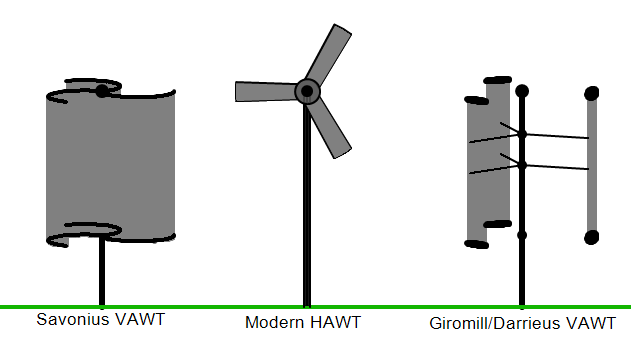SUBSCRIBE TO OUR NEWSLETTER
This wind turbine calculator is a comprehensive tool for determining the power output, revenue, and torque of either a horizontal-axis (HAWT) or vertical-axis turbine (VAWT). You only need to input a few basic parameters to check the efficiency of your turbine and how much it can earn you.
You can use our tool as either a HAWT or a VAWT calculator – to change the turbine type, simply choose your desired turbine from the drop-down list at the top of the calculator.
If you’re interested in renewable energy in general, our hydroelectric power calculator and solar panel tool may be useful for you.
What’s the difference between HAWT and VAWT?
In horizontal-axis wind turbines, or HAWT for short, the blades rotate around a horizontal axis. These are the most common onshore wind turbines, commonly placed on hills and in other areas that receive a lot of wind, but are also widely used offshore. Vertical-axis wind turbines (VAWT), on the other hand, rotate around a vertical axis.
The efficiency of horizontal-axis turbines (ratio of wind power to output power) is typically higher, but they do have some drawbacks. Since the blades are subject to the force of inertia, which changes in direction, they receive an alternating load which is often detrimental to the blades’ integrity. Additionally, the generator is placed far above the ground what makes repairs and maintenance costly.

How to calculate the power generated by a wind turbine?
To calculate wind turbine power, you need to estimate two values: the available wind power and the efficiency of the wind turbine. Multiplying these two values produces an estimate of the output power of the wind turbine. Below you can find the whole procedure:
- Sweep area of the turbine
Before finding the wind power, you need to determine the swept area of the turbine according to the following equations:
For HAWT:A = π * L²
For VAWT:A = D * H
where:Lis the blade length – the radius of the horizontal-axis turbineDis the diameterHis the turbine height
- Finding the efficiency of the turbine
You can find the total efficiency of the turbine as follows:μ = (1 - kₘ) * (1 - kₑ) * (1 - ke,t) *(1 - kt) * (1 - kw) * Cₚ
where:Cₚis the turbine efficiency. It must be lower than the Betz limit (59.3%), and is typically between 30-40%kware the wake losses due to neighboring turbines and the terrain topography, typically 3-10%kₘare the mechanical losses of the blades and gearbox, typically 0-0.3%kₑare the electrical losses of the turbine, typically 1-1.5%ke,tare the electrical losses of transmission to grid, typically 3-10%ktis the percentage of time out of order due to failure or maintenance, typically 2-3%μis the real efficiency
Efficiency is usually expressed as a percentage, but you input it into the formula as a fraction (for example, 30% = 0.3).
- Calculate the available wind power
Once you know the sweep area, you can find the available wind power according to this formula:Pwind = 0.5 * ρ * v³ * A
where:Ais the sweep areaρis the air density, assumed to be 1.225 kg/m³ by default (you can change it in advanced mode)vis the wind speed – the typical usable range is approximately 3-25 m/sPwindis the available wind power
- Calculating the output power
To find the wind turbine power, simply multiply the efficiency by the wind power available:Poutput = μ * Pwind

